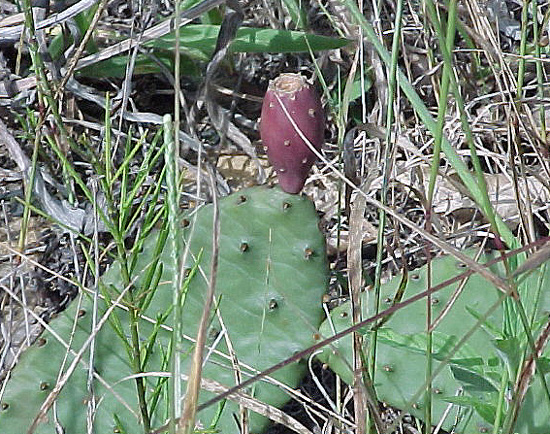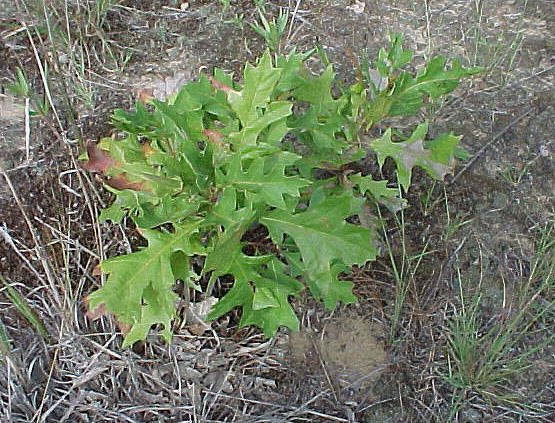Bullsnake In A Bottle (continued)

Juvenile Hognose
Getting back to the truck, we discovered that our befriended dogs had managed to jump up into the truckbed, worked off the top of Rick's cooler, and then ate his lunch. Ungrateful curs! We had given them lunch scraps on our previous visit, but no more! "Charity ends where thievery begins," I joked.
After eating two lunches split three ways, we moved on up the sand road, checking out some more old fields and junk piles. We asked for permission wherever possible and avoided areas posted for trespassing. A man in a ten gallon Hoss Cartwright hat shouted "take 'em all, boys!" from his riding lawn mower. In our experience, that's the attitude most folks take when you ask permission to hunt snakes on their property - over many years, I can only recall being refused once.
It started sprinkling again as we worked the remains of a burnt-out bowling alley. Ken kept a sharp eye out and managed to spot a hatchling Eastern Hognose (Heterodon platirhinos) at his feet. We watched it for a few minutes as it feigned death in our hands, writhing and smearing mouth secretions everywhere. We put it back on the ground under some brush, and after a few minutes it resurrected itself and crawled away. We always enjoy seeing one of these old friends in the field, and try not to bother them too much, although they are always ready to oblige should you need pictures of their death throes!
Another abandoned field nearby was dotted with rusting pieces of metal. Burr Oak and Blackjack Oak were making a comeback here, along with Prickly Pear cactus. Separated from Ken and Rick, I was not on the spot when the cry went up - Ken had found a Bullsnake under a piece of corrugated metal, a beautiful sixteen inch yearling. It was black and grey on an ivory ground color, with just a touch of rusty brown at mid-body. The little monster made no attempt to bite or even hiss as we handled it and marveled over it, our first Bullsnake. Why did it take me so long to find one? I had been in the right place at the wrong time, more than once. At any rate, the search was over!
One of the homes for the Illinois Bullsnake is the "oak savanna" habitat, typically consisting of fire-resistant trees such as Burr Oak (Quercus macrocarpus), various grasses and prairie plants. Fire plays a major role in maintaining the open habitat under the trees by burning back the heavy brush. Prickly Pear cactus (Opuntia) is another common sight. The soil is very sandy, and there are pocket gopher burrows and tunnels everywhere. The Bullsnakes prey on the gophers, invading their burrows and eating any rodents they find. The enlarged, upturned rostral scale on the nose enables the Bullsnake to burrow into the sandy soil with ease.
Other common reptiles found this type of habitat include the Ornate Box Turtle (Terrapene ornata ornata), the aforementioned Eastern Hognose, and Prairie Racerunners (Cnemidophorus sexlineatus viridis. We saw many Racerunners, but of course could not catch many during the heat of the day when they were active and fast. Once in a while we could nab one hiding under a piece of junk.





